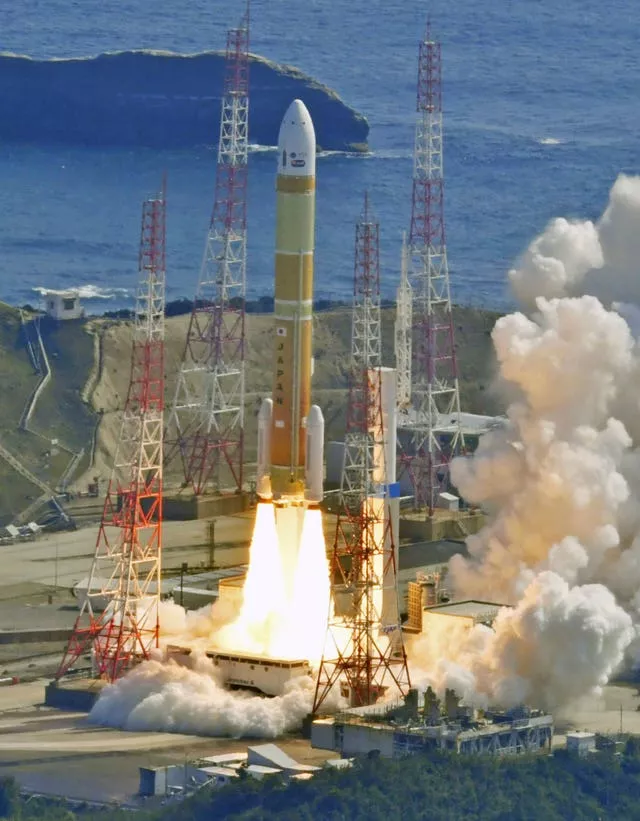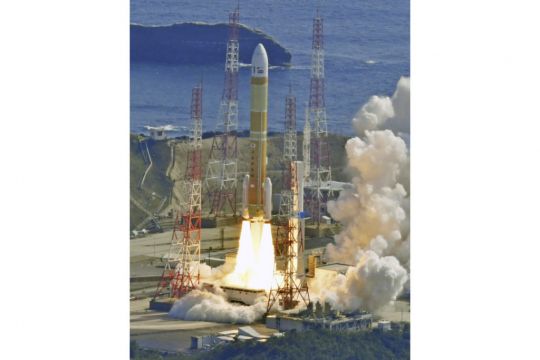Japan’s space agency has postponed the launch of a second test flight of its new flagship rocket H3 series planned for this week because of bad weather forecast at the launch site.
The delay comes as Japanese space officials scramble to ensure a successful lift-off, a year after the rocket’s failed debut flight.
Thunder and strong winds are forecast at the launch site on the Tanegashima Space Centre in southern Japan, according to Masashi Okada, H3 project manager at the Japan Aerospace Exploration Agency, or Jaxa. The launch was initially planned for Thursday.
The agency will decide on a new launch date as early as Wednesday, he said.
[Press Release]
Launch Postponement of the second H3 Launch Vehiclehttps://t.co/ORn2T2mmRVAdvertisement— JAXA(Japan Aerospace Exploration Agency) (@JAXA_en) February 13, 2024
The forthcoming launch is considered a key test after Japan’s failed debut flight last March, when the rocket had to be destroyed, along with the advanced land observation satellite, or ALOS-3, it was carrying.
The fiasco triggered disappointment and uncertainty about Japan’s space exploration plans, concerns that were compounded after a spacecraft designed by a Japanese company crashed during a lunar landing attempt in April.
Jaxa and its main contractor, Mitsubishi Heavy Industries, have since identified and mitigated the possible electrical issues that led to the failure to ignite H3 rocket’s second-stage engine, and carefully rehearsed for the forthcoming second test flight.
“We had a year of turbulence, but we have taken all possible measures we could,” Mr Okada said.
He said the main mission goal is to put the rocket into the intended trajectory.
Jaxa also aims to place the rocket’s payloads into the planned orbit, but this time the H3 will carry a 2.6-metric tonne mock-up of the ALOS satellite, called VEP-4, instead of the real thing.
It will also carry two observation microsatellites – one developed by Canon Electronics that can capture still and moving images with high-speed processing, and another co-developed by Seiren and several other companies and universities.
The launch of the H3 rocket had already been held up more than two years due to an engine development delay.

The rocket is Japan’s first new series in more than two decades, was developed at a cost of 220 billion yen (about £1.2 billion) by Jaxa and Mitsubishi Heavy Industries as a cheaper and more globally competitive successor to Japan’s trademark H-2A, which is set to retire after its forthcoming 50th launch.
H3 can carry larger payloads than H-2A at half the launch costs and has a newly developed hydrogen-fuelled main engine.
Expectations are running high after Jaxa’s historic precision Moon landing last month of its spacecraft launched from the H-2A rocket, with hopes that it would show Japan’s competitiveness with the United States and rival China.
Earlier in January, the 48th H-2A rocket successfully placed a spy satellite into its planned orbit.
Mitsubishi’s H3 project manager, Mayuki Niitsu, said there is a growing demand for rockets that can stably launch satellite constellations.
“We hope to achieve success of the second H3 rocket and show our capability to our potential customers,” he said, adding that H3 could be competitive with major global players, such as SpaceX.







